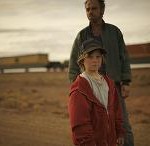Last Ride: a ride to remember
 Director Glendyn Ivin and Screenwriter Mac Gudgeon took a Last Ride and gave the original story a new dimension. Laine Lister writes.
Director Glendyn Ivin and Screenwriter Mac Gudgeon took a Last Ride and gave the original story a new dimension. Laine Lister writes.
When Melbourne screenwriter Mac Gudgeon turned the final page of Denise Young’s novel Last Ride, he knew immediately that he’d be involved in adapting the story for film.
“I thought the book had two really interesting characters and a very good spine for a film,” he says. “But I felt it ended a bit early for a film,” he admits.
Gudgeon, who penned acclaimed feature films Ground Zero, The Delinquents and the Francis Ford Coppola/Zoetrope production Wind, is mid-way through breakfast during a Tuscan getaway when we speak.
“There needed to be more resolution between the father and the son,” he explains.

